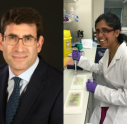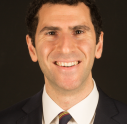Researchers have used a new method for classifying brain tumours – a ‘molecular’ test which assesses chemical changes in tumour DNA – which improves the accuracy of the brain tumour diagnosis a patient receives.
In a trial involving adult patients at the UCLH National Hospital for Neurology and Neurosurgery (NHNN) and the UCL Queen Square Institute of Neurology (IoN), 50% of patients had their diagnosis refined after having the new molecular test to classify their brain tumour – and another 25% received a different diagnosis which more accurately reflected their condition.
Lead researcher Prof Sebastian Brandner said: “Improving the accuracy of the diagnosis means we understand a patient’s tumour on a deeper level. It means oncologists can tell patients more precisely about the risk of growth of their brain tumour, and it means doctors can more effectively treat the brain tumour.”
Existing molecular tests for brain tumours detect genetic mutations in the DNA in tumour cells. But the molecular test developed by researchers at NHNN and IoN goes a step further to look at small chemical changes on the DNA of tumour tissue – known as epigenetic changes. Such chemical changes also exist in normal tissue but these are different from the changes seen in tumours.
Researchers studied these chemical changes on the DNA of tumour tissue – thought of as ‘fingerprints’ left on individual tumours – and used them to establish new groups of tumours.
A classification system for brain tumours, based on chemical changes on the DNA of tumours, already exists – and the researchers at NHNN and IoN found that the classification method with these new tests revealed more accurate detail about patients’ tumours.
“Our study found out more about tumours that could not be sufficiently diagnosed, even with other detailed molecular tests, or where patients had an unexpected clinical development,” Prof Brandner said.
“Many patients treated at UCLH NHNN have already benefitted from this novel technology,” he added.




